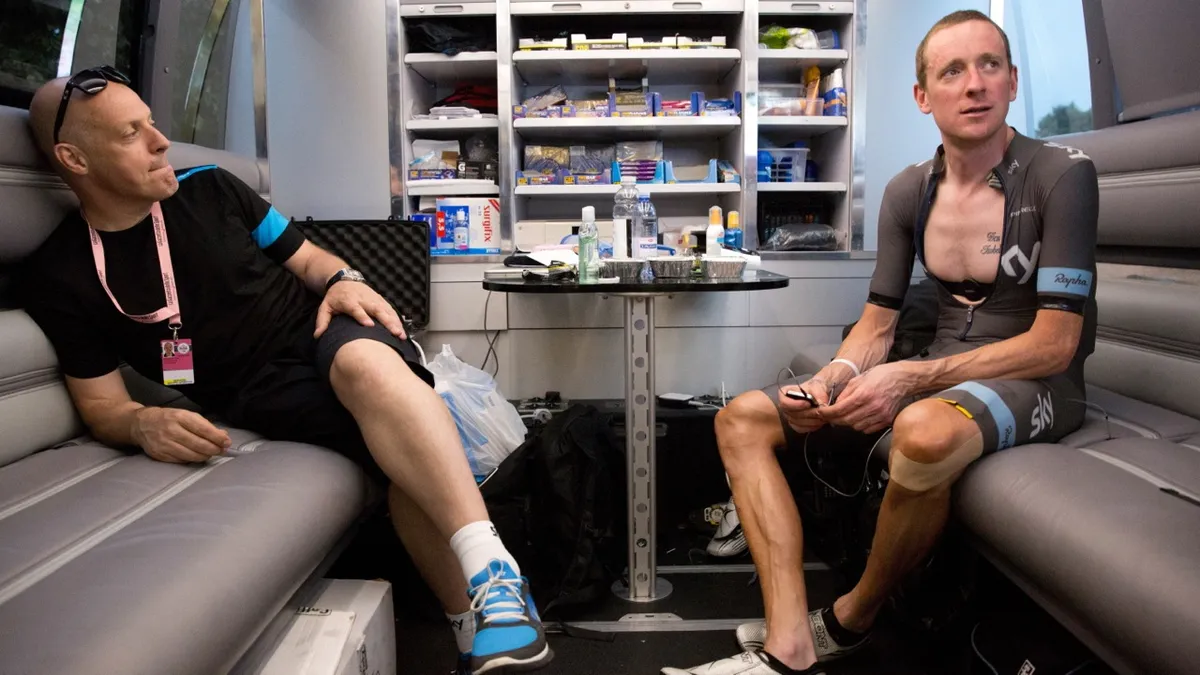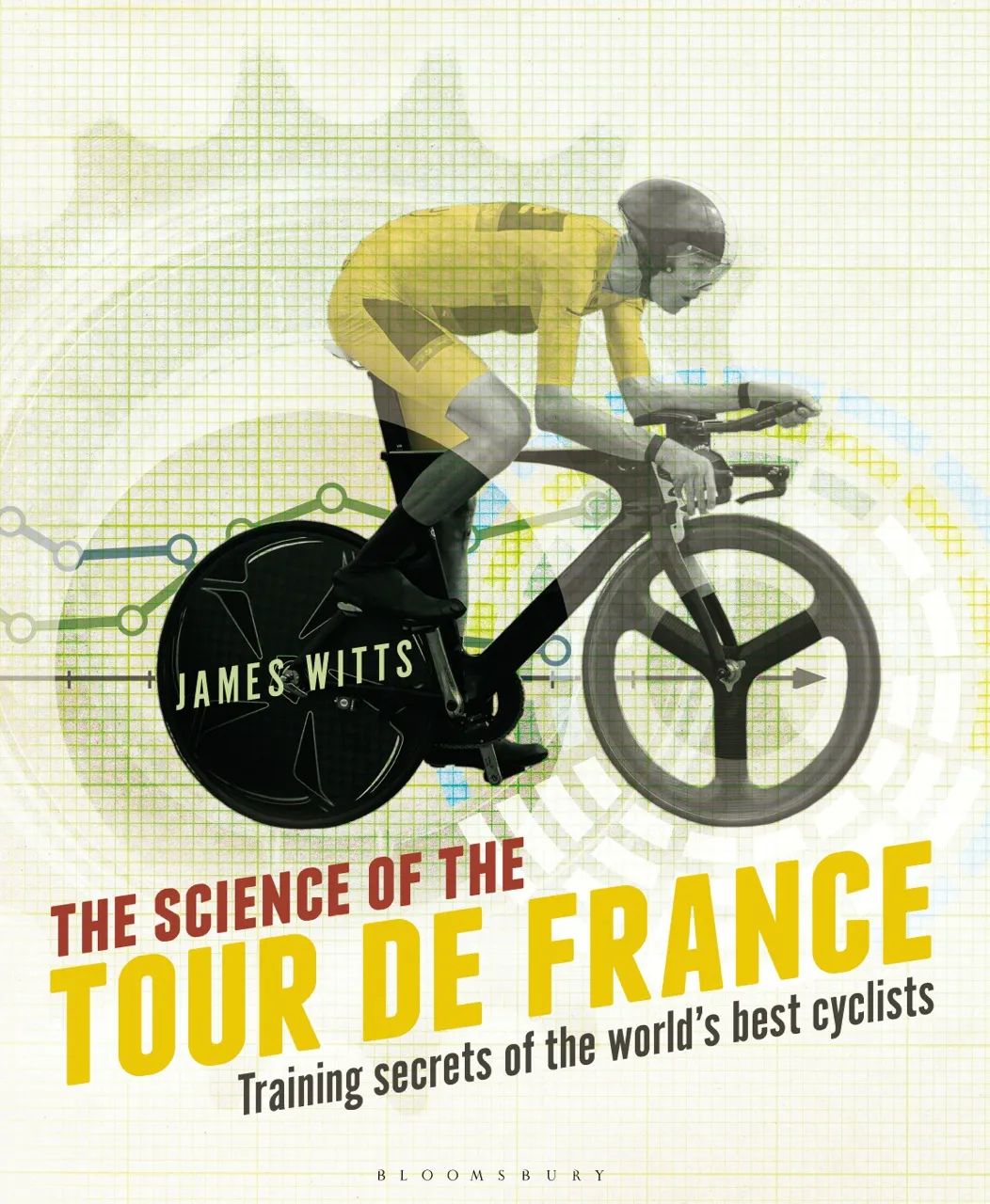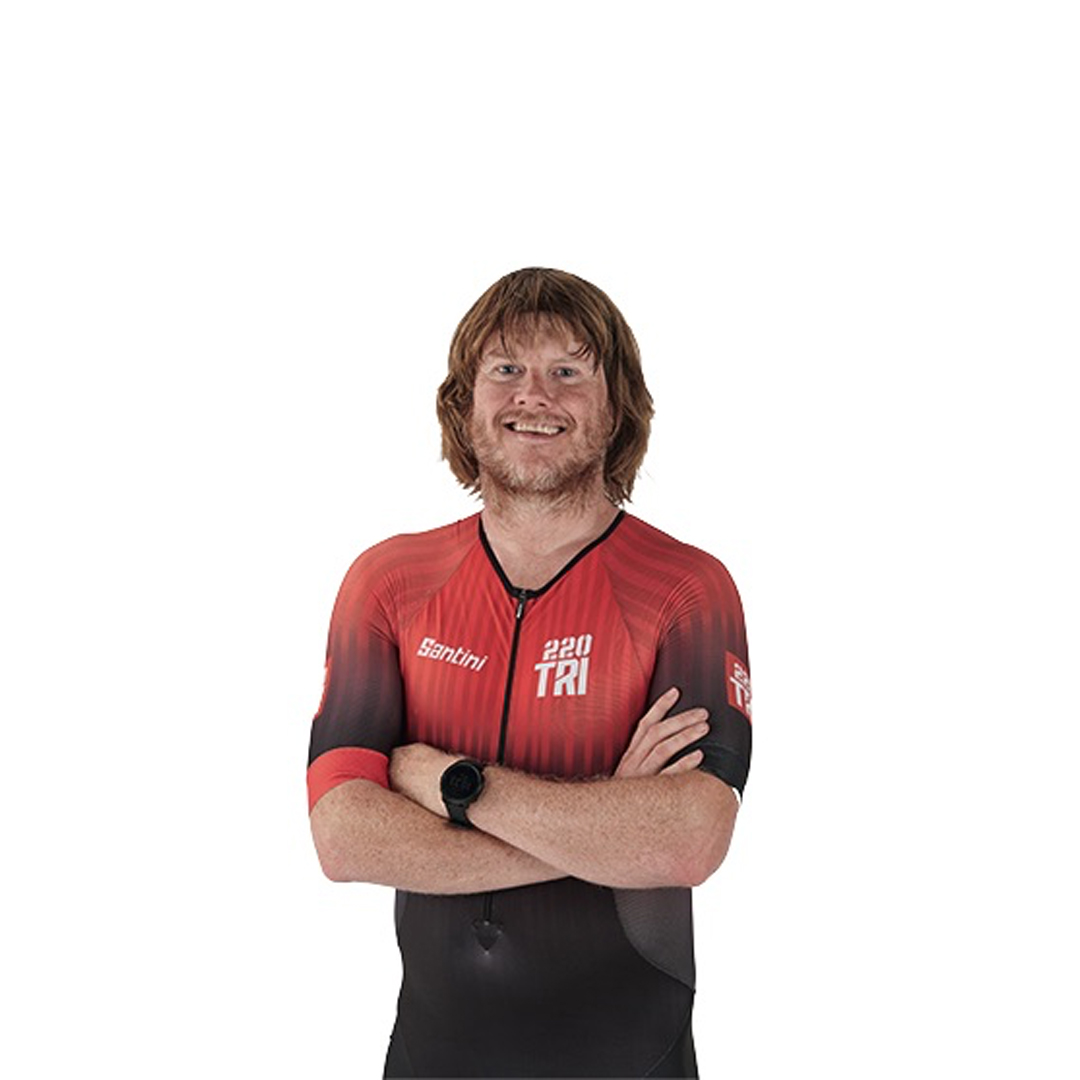The focus on 'marginal gains' is synonymous with British Cycling's massive success of recent years; it's become a winning approach that general manager Dave Brailsford wields to great effect at Team Sky. So now that post-race cooldowns, luxurious team buses and individualised nutrition plans have become commonplace across pro cycling, what's next? In this extract from new book 'The Science of the Tour de France', author James Witts looks at Marginal Gains 2.0.
- From pillows to Pinarellos: inside Team Sky's marginal-gains world
- Heart-rate monitor training for cyclists
- Core training for cyclists
At the start of 2015, Dave Brailsford flew to San Francisco with Team Sky’s data scientist Robby Ketchell. The visit attracted headlines because Brailsford visited 20 tech companies in search of the next big thing – or things – that could help his riders go faster. At one point on his visit, Brailsford was pictured with electrodes attached to his head while playing darts.
"It’s a form of cranial stimulation," he told the Guardian’s Sean Ingle. "The military have been using it for their snipers to reduce the time it takes them to acquire a skill. What they are suggesting is that this increases the plasticity of the cortex to enable fast-track learning. After a while they sent an electric current to see whether it could improve my play."
And it worked – "I went from shit to less shit," Brailsford said, laughing. You won’t see Froome and Porte connected to the national grid while ascending the Galibier anytime soon, though wearable technologies and apps will become more prevalent across the board. "Muscle Sound is one to keep an eye on," says Ketchell. "They non-invasively measure glycogen content, which would obviously help with aspects like training intensity and nutrition strategies."
Ketchell says the numerous startups that populate San Francisco are a good place to uncover where the future of cycling lies. But why spend money on a plane ticket when you can simply ask industry insiders and riders what gear, training or nutritional development will have the greatest impact on professional cycling?
1. More wind tunnels
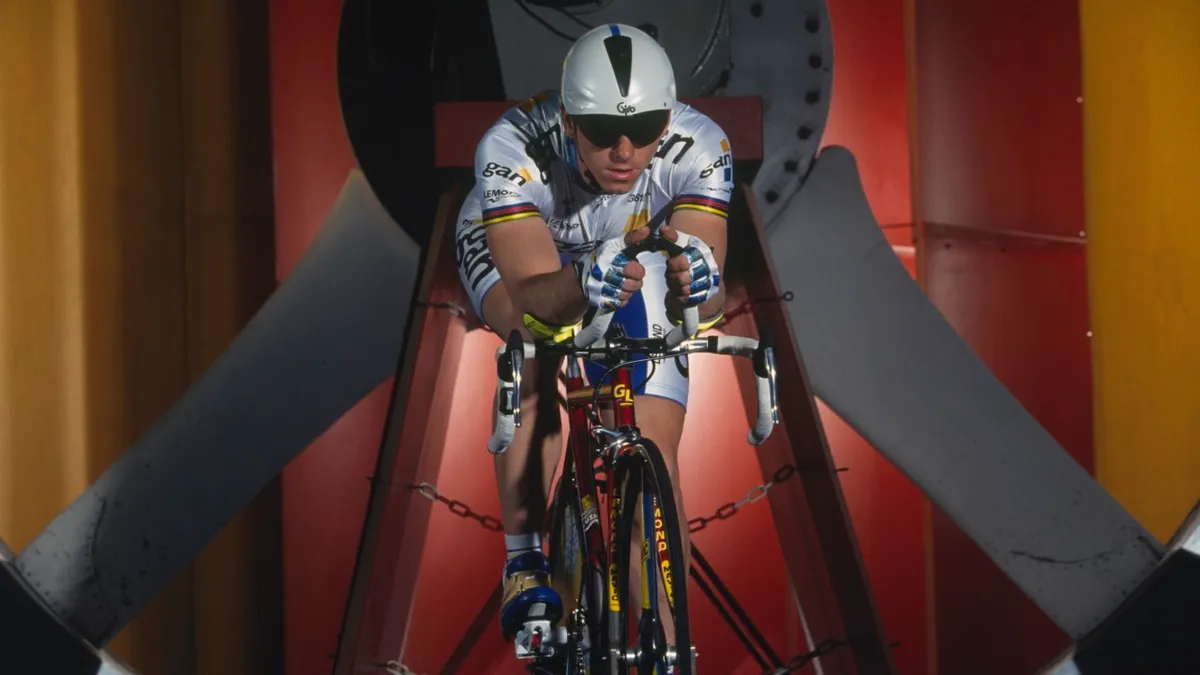
"When it comes to wind tunnels, the cycling industry has moved from not knowing that there’s something they don’t know, to knowing there’s something they don’t know," says Chris Boardman, Tour de France Prologue winner, 1994.
"No one’s really got to grips with an ongoing strategy of understanding. People here and there are using wind tunnels, and trying to develop ways to measure aerodynamics, but no one has a strategic way to consistently look at the greatest user of energy.
"That’s why I’ve just invested in a wind tunnel that’s a third built, which you’ll be able to use for aerodynamics, physiological testing, bike-fitting... it’s a whole performance centre that’ll cost not much more than the price of a curry to use.
"It’ll be good for the pros, systematically teaching them why aerodynamics matters so much and how important it is; why it’s worth exploring clothing and different positions. It has to be part of your standard training to fundamentally understand what’s happening on a daily basis in a sport that’s governed by aerodynamics. I want it to be as frequent as benchmark training sessions that the pros can nip into the wind tunnel and see how their coefficient of drag is changing. Affordable wind tunnel testing is the future."
2. Disc brakes = new frame designs and race tactics
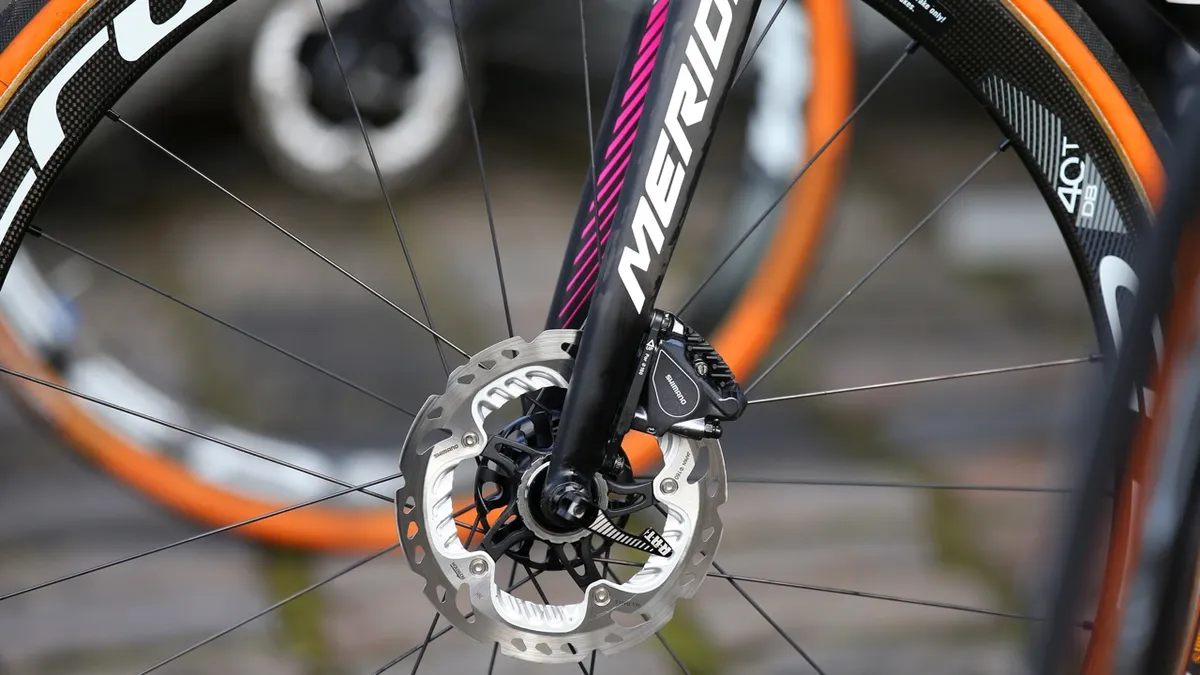
"Disc brakes are being tested in the professional peloton right now and, if all goes well, the UCI will allow them into the WorldTour from 2017," says Paul Lew, director of innovation at Reynolds Cycling. [Lew was speaking before the disc-brake suspension following a crash at Paris-Roubaix 2016.]
"And that’s a double-edged sword. On one hand, disc brakes have presented the biggest aerodynamic liability that wheel and frame manufacturers have had to overcome. But they’ve also presented the greatest opportunity to reshape bicycles and rim profiles to optimise aerodynamics. There are all kinds of new opportunities when the designer isn’t restricted by the addition of a rim caliper. It’s a great challenge with great rewards.
"It’s a challenge for both wheel and frame manufacturers because both parties can innovate so much that it creates compatibility issues with fit and components, so innovations have to come in phases and steps. For instance, I can manufacture a wheel that might have outstanding dynamic performance because of a very innovative shape but it won’t fit in a bike frame. Even when you remove the calipers, the fork and stays might be too narrow. Or the hub mount isn’t optimised for width and dimension, so all this has to be taken into account.
"Innovation is a combination of wheel and bike manufacturer working together, and good communication between the two parties. I have some unique wheel ideas but they have to be within the boundaries of what’s compatible with bike frame design.
"It’s a strange one with disc brakes because their development has been driven by the masses where they’re already available. I’m sure that once the UCI ratify them for professionals they’ll prove popular. Mind you, if the UCI decide to reduce the minimum weight regulation, we might see a resurgence in high-end rim brake designs.
"This could result in exciting race situations where you see cyclists swapping bikes in the middle of a stage. You might see the 10–12 GC riders changing bikes multiple times so that they can descend at the fastest speed with a disc-brake bike and ascend at top speed with the super-light caliper brakes."
3. Deep research on the physiological stress of a Grand Tour
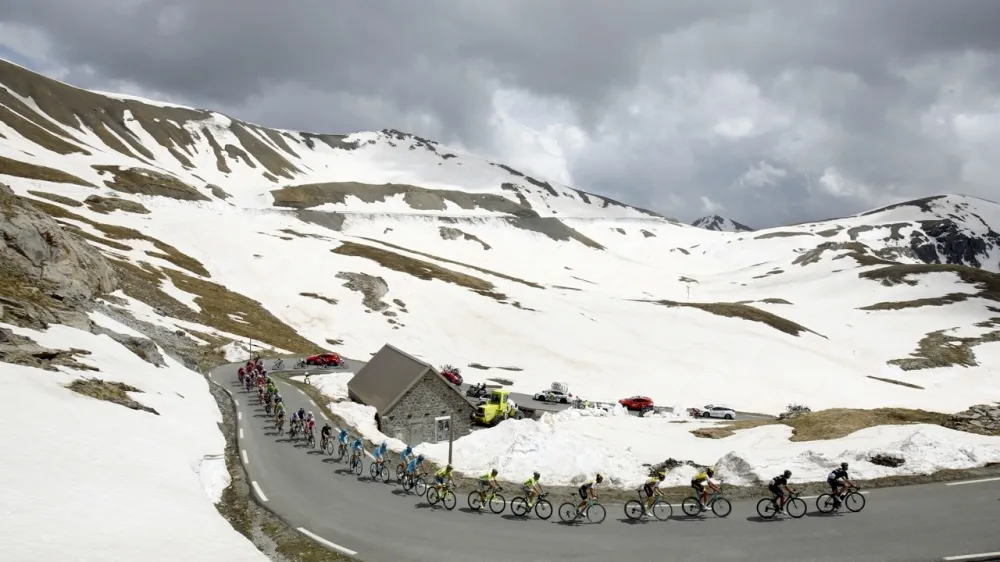
"This sounds vast but we’re keen to understand much more about the physiological stress imposed by a three-week Grand Tour," says Dr Jonathan Baker, sports scientist at Team Dimension Data. "That’s why we’re looking to undertake research studies with the team at the Tour.
"We’ve done it at the Vuelta and it’s a beneficial exercise. You collect data on numerous physiological components like exactly how much food they’re eating; their body mass; how their hormonal profiles fluctuate after each and every stage. We’ll look to publish the results in a research paper.
"Clearly we have to get the riders to buy into it, but if we can make it clear to them that they’ll be learning things no one else knows – undertaking a real-life science experiment that’ll benefit their performance – I’m sure they’ll be keen."
4. Metabolic triangulation
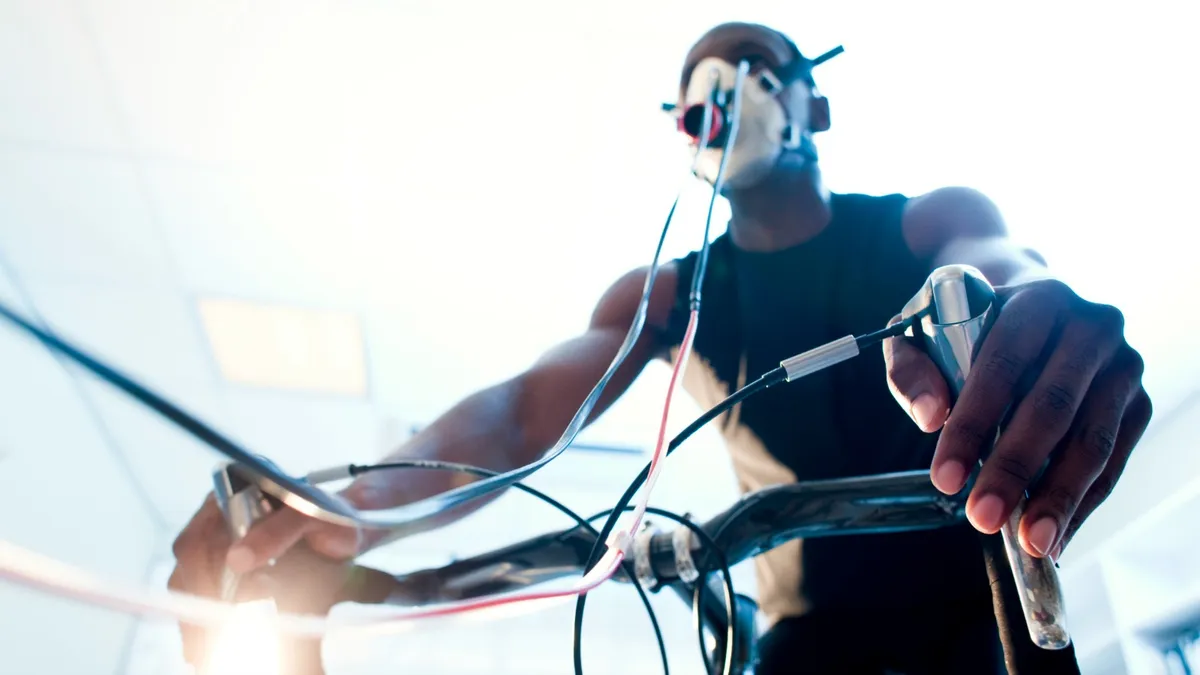
"The most interesting thing that I’ve seen is that people are poking around with a wearable monitor that determines lactate concentration in your bloodstream," says Jonathan Vaughters, Team Manager at Cannondale-Drapac.
"For me, that’s the next big shift in physiology because when you cross-correlate that information with heart rate and power data, you create a deeper, more rounded picture of what’s happening to the rider; you begin to see metabolic triangulation. It’ll tell you how hard the engine’s working, how much power it’s producing and what the by-products are of that effort.
"The brain’s also an area of interest. I’ve noted some interesting research looking at hypoxia [oxygen deficiency] on the brain. Studies have shown that as circulation rises, so do intelligence levels, which go up and up and up with increasing effort until you reach a certain intensity and duration.
"That’s when blood almost drops out of the brain. The blood flow to the brain significantly decreases within a certain timeframe, and is the precursor to your body saying, “No, we’re not doing this anymore, we’re slowing down.” Hypoxic training could train these levels to a higher level – though how interested the riders would be in being oxygen-starved is a different matter.
"But sometimes you just have to make the leap from theory into application. Numerous studies have shown that X, Y and Z works well for an amateur athlete. That doesn’t mean it’ll work for the professional rider.
"One of the problems with academic research is that professional riders just don’t have enough time on their hands to partake in these studies. There have been many avenues we’ve pursued down the years and it’s just not worked. It’s something you have to be aware of when chasing new technologies."
5. Fewer vibrations
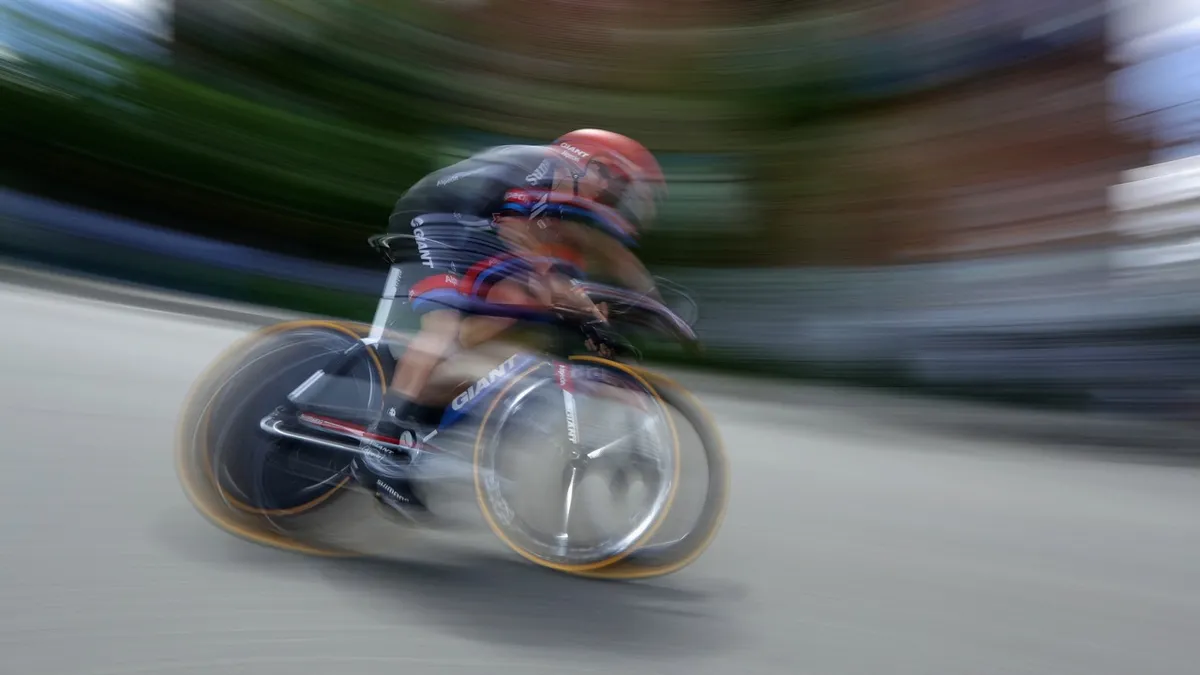
"We’re working on a device where we can measure how much vibration there is within a bike," says Teun Van Erp, sports scientist at Giant-Alpecin. "We’re currently doing tests, and still have to work things out with the company we’re collaborating with. We can also test things like tyres. Usually we say if tyres are wider, there’s less vibration. With this we can measure that.
"We’re also working on a project tied in with the anaerobic threshold of riders. Again, we did some tests and the results are pretty scientific but we still need to work it out. Cycling is becoming more scientific."
6. Altered rider perception of effort and fatigue
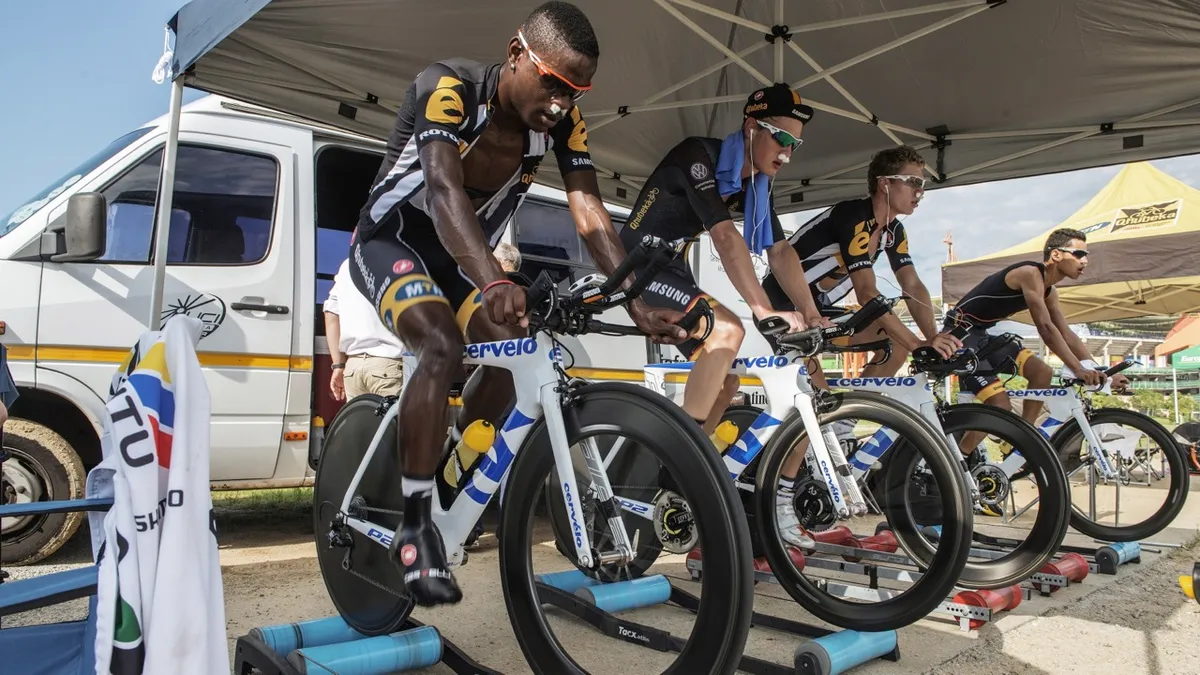
"My psychobiological model of fatigue suggests that it’s not the physical or a subconscious message that stops us but our perception of fatigue," says Samuele Marcora, professor of exercise physiology at the University of Kent, England.
"I had 10 male athletes perform a simple exercise protocol on stationary bikes. They rode as hard as they could for five seconds. The subjects then rode at a fixed power output until they could no longer sustain this wattage – or around 12 minutes on average – before repeating the five-second max test.
"I discovered that power output from the second max test was roughly 30% lower than the first, but was still three times greater than the power generated when riding to exhaustion. So how could the subjects hardly pedal in creating 242 watts, before powering to 731 watts?
"It’s down to motivation, which impacts perception of effort. When the effort is perceived as maximal or when the effort required eclipses the amount of effort you’re willing to exert, you stop. The psychobiological model is a conscious awareness of the central motor command (brain and neural system), which sends signals to the active muscles and ties in with the physical models.
"If you have weaker muscles, you have to increase the activity of central motor command to compensate. This is perceived as in increase in effort and will stop you. Signs of 'weaker muscles' are physical aspects like lower glycogen levels or acidosis. However, they have an indirect impact rather than directly stopping you. It’s why caffeine is used. It’s been shown to lower the perception of effort.
"There are simple cerebral activities designed to reduce your perception of effort. The first focuses on subliminal messages. These affect your subconscious brain and are based on cognitive science. In one study, I showed that positive words like 'go', 'energy' and 'lively' motivated the group more than negative words like 'stop', 'toil' or 'sleep', extending their workout time by 17%.
"Then there’s brain endurance training, a project I’ve received a grant from the Ministry of Defence to develop. Key is “response inhibition”, which works in an area of the brain called the anterior cingulate cortex (ACC) and is linked to motivation and effort.
"I showed that by stimulating an athlete’s ACC three times a week, focusing on something they don’t like, athletes perceive less fatigue. My team are currently working on apps that’ll tap into this area. My model is about endurance performance and what role your mind plays in the physical outcome."
7. Keep riders cool
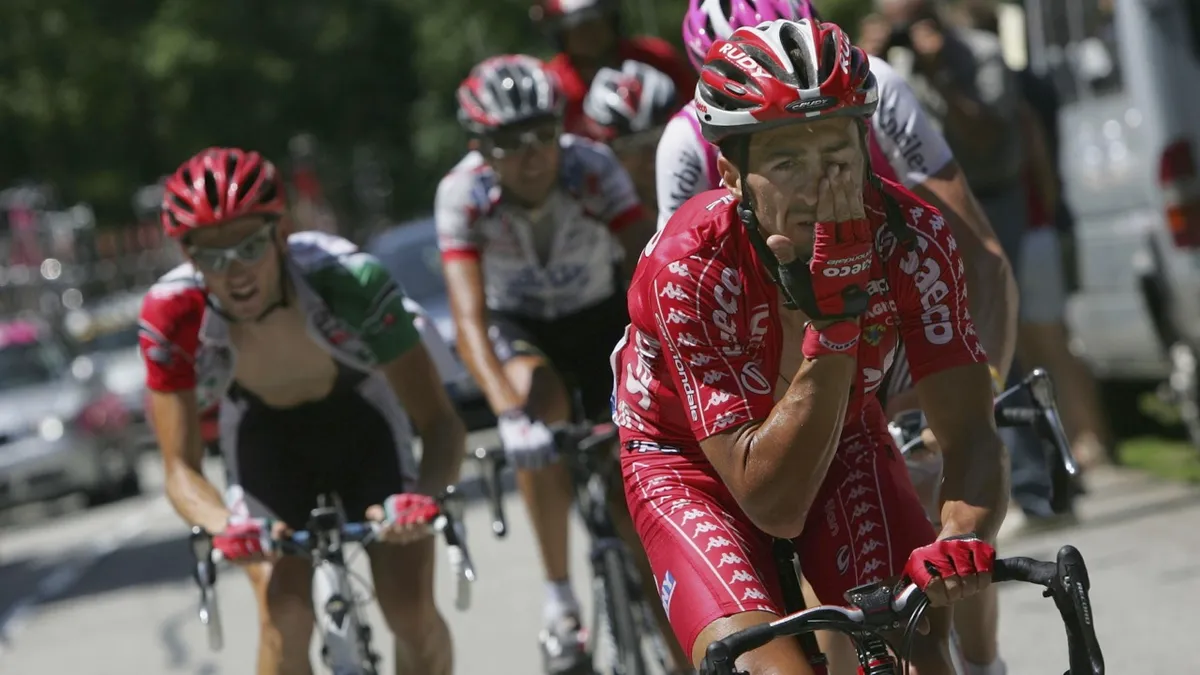
"We’ve looked at a lot of stuff, including integrating heart-rate sensors into clothing," says Steve Smith, brand manager at clothing company Sportful. "We’ve also looked at temperature sensors, but the problem is that in integrating these bits of technology, we have to make a heavier garment. Right now there are still some big gains to be had from aerodynamics.
"Helping the rider to ride at optimal temperature is also a big deal. It’s pretty natural that when you jump on your bike, after half an hour of riding, your core temperature might have increased by 1°C but that’s normal.
"If your body heats up by another 0.5°C, performance will drop dramatically. And that makes sense. If you have a fever, you’re just laying in bed and feel terrible. So if you had a fever on the bike, you’d feel terrible. So we’re continuing to look at methods to innovate wicking and cooling."
8. Sociometers
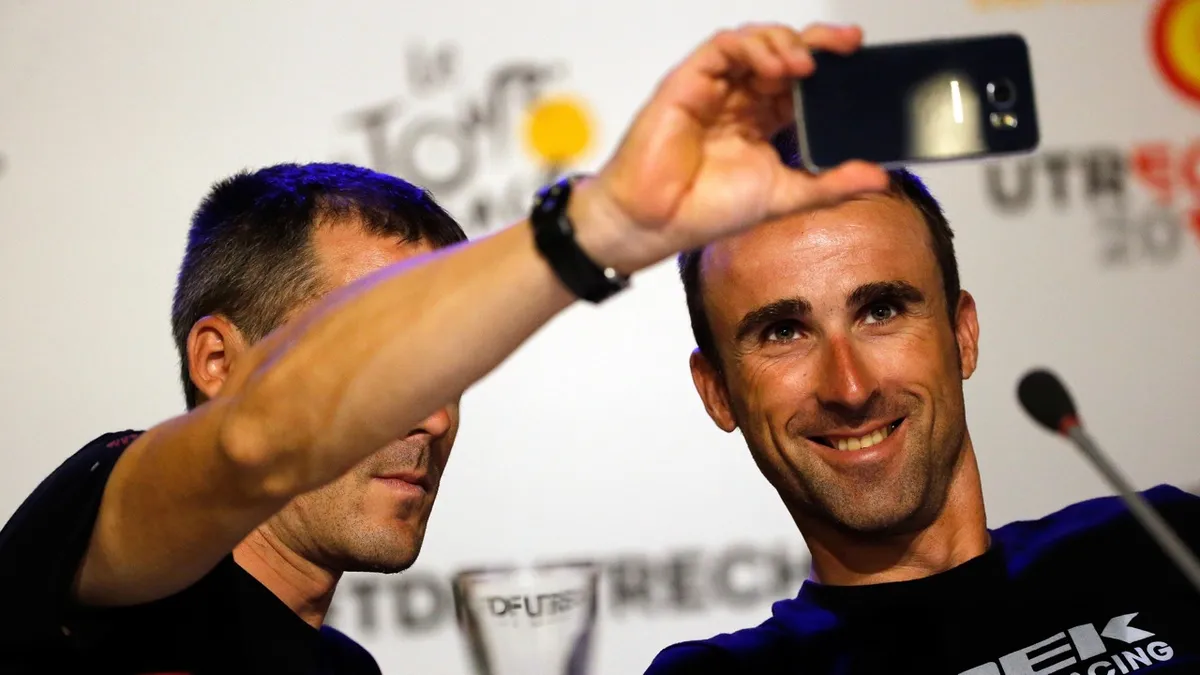
"MIT has developed something called a sociometer and I think this could have a role to play in the future of team sports like cycling," says David Martin, exercise physiologist at the Australian Institute of Sport. "It’s a complicated one but let me explain...
"Because humans are complicated and are social and have emotions, there’s a really difficult overlay of sad athletes and angry athletes, happy athletes and bored athletes, and motivated athletes. Which is a pain in the butt because, as a coach, we know that these athletes are so fit, they could win any race. But they don’t for a variety of reasons.
"You’ll hear a lot of athletes say 'I won this gold medal and would like to thank my coach because he believed in me'. They’ll say, 'I am just part of a great team. We have a shared vision and I love my team.' What the sociometer is doing is trying to put metrics behind those concepts.
"The basic idea behind a sociometer is that you and I are connecting right now. And there’ll be a whole bunch of people in your life that connect with you. There is this idea of human and verbal communication that strengthens connectivity in groups. So you can start to build up these diagrams, of ball and stick figures, that look like clouds of connectivity.
"You begin to see every person as a node and every link is based on communication. If you are a small dot and only have one thin line coming to you, it means you’re not really connecting with anyone. If you’re a big dot, it means lots of people connect with you. If it’s a big thick line, it means you’re in constant conversation and dialogue with other nodes (or people).
"As you communicate with people a lot, you start to draw those nodes closer and closer to your node. If you don’t communicate very often or very long, people start to separate away from you. So what you get is these really interesting diagrams that paint a picture of organisation that shows this individual is connected to the team.
"It pulses and has a timeframe to it. There are times when you’re really connected; sometimes not connected. In the future, I think we’ll see blueprints that are very healthy and conducive to world-class performances. We’ll also see social environment diagrams that aren’t good at all. And see stuff in the middle.
"The magic of the future is not only to observe decaying communication or links but to actually do something about it. To include the individuals who are a catalyst for the positive change you’re after within a group. Getting the timing right and remedying alien relationships.
"I think we all feel it; we feel the confidence wane from a team. We feel the general morale drop. Some individuals are intuitively good at making a light joke or trying to improve the situation. Some coaches are phenomenal leaders who have a great ability to connect and reposition the team. This is interesting feedback for teams to say that there’s technology out there that will help the team move in a positive direction. It’s a blend of neurophysiology, organisation psychology and sports science.
"Practically, there are some easy applications. The rider spends a lot of time on their bike. All I have to do is wire up the bike with a directional microphone and a proximity detector. I’ll be able to tell if someone chats to someone else and where they are in position to each other. Over a six-hour ride, you might get a fingerprint of the team’s dynamic. They wouldn’t even need to know. You could just say, 'in this team we ride these bikes and they’re instrumented in a number of different ways'. Cyclists are masters of modelling."
9. Dynamic simulators
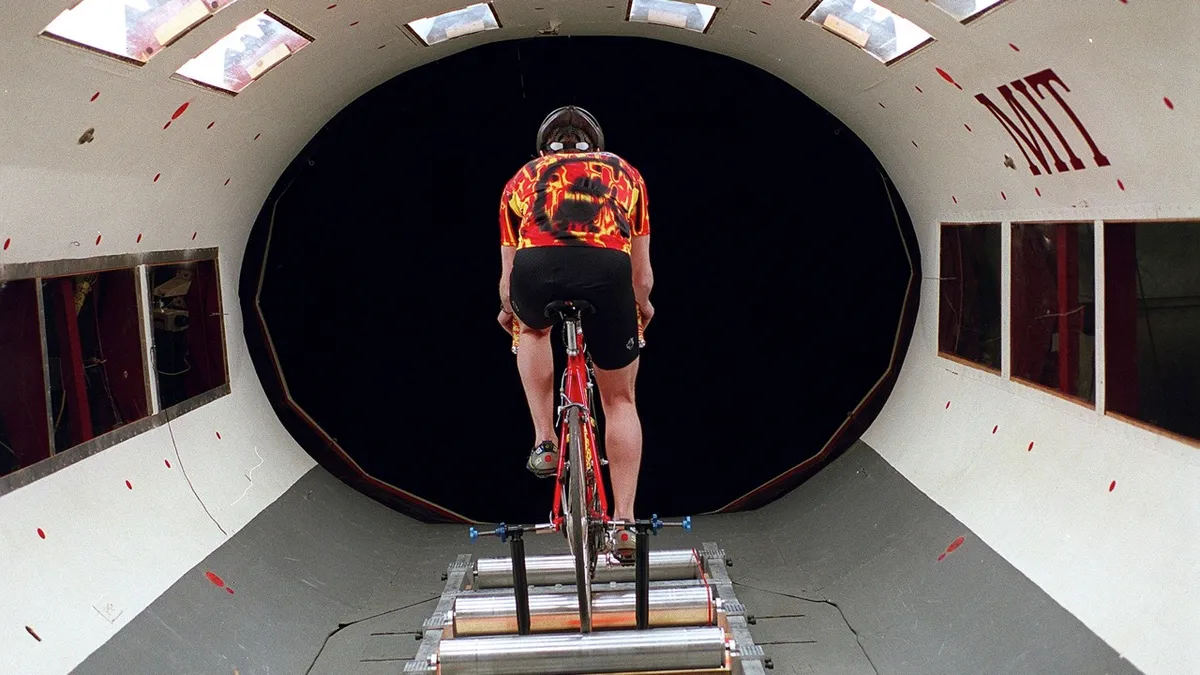
"Where we stand to gain is by custom building things," says Chris Yu, aerodynamics engineer at Specialized. "One example is having a more dynamic simulator, like you’d have in Formula One. They can simulate their entire race in the wind tunnel from different approaches and speeds.
"We have a projector built into our wind tunnel. Imagine if we load up a time-trial course on video and you’re riding that in the wind tunnel, with twists and turns into crosswinds and out of crosswinds, utilising turntable dials that helps to mimic the course and wind profile. That’s somewhere we can and will go."
10. Morning workouts
"The morning is often cited as the preferable time of the day to train as testosterone levels show a circadian decline from when you wake," says Jamie Pringle, exercise physiologist at the English Institute of Sport. "Strength training in the morning could also elicit greater rewards later on.
"My colleague, Liam Kilduff, showed that morning exercise primes the body for afternoon competition. A short, high-force workout early on that taxes the entire kinetic chain, like a back squat, stimulates a favourable testosterone response in the afternoon. We’ve used this strategy at British Cycling for afternoon competition and it’s a good primer for peak performance."
11. Sticky rice starch
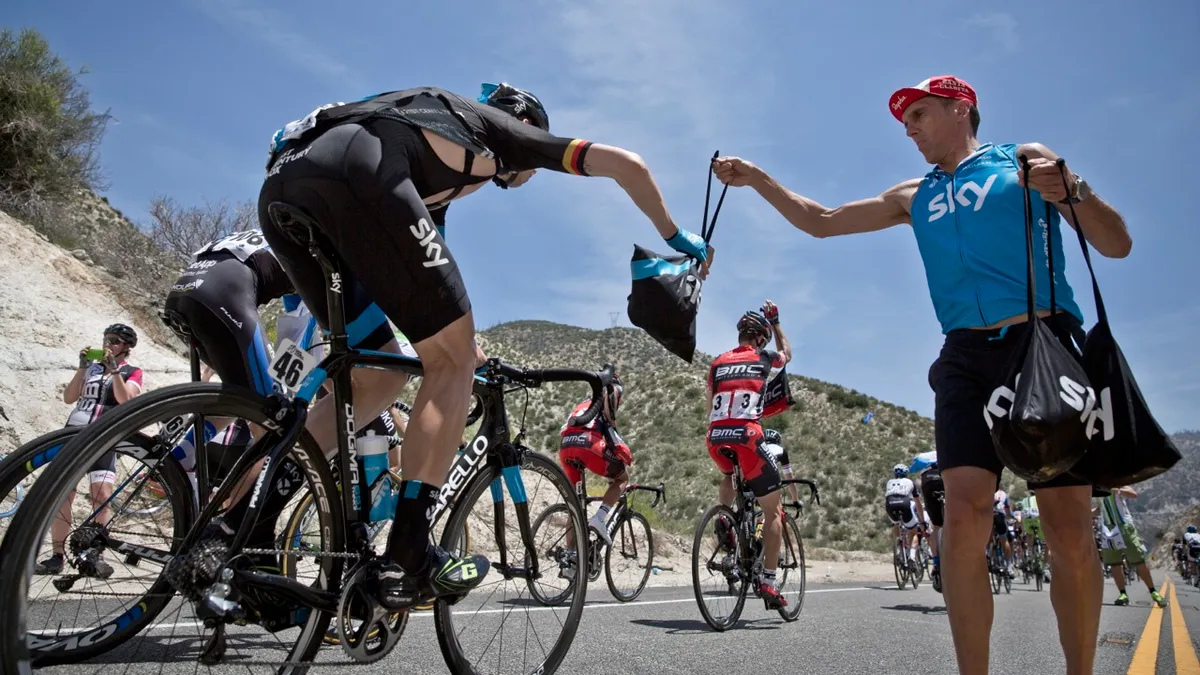
"When I sold Science in Sport [UK nutrition company], the patent for GoGel went with it," says Tim Lawson, head of nutrition company Secret Training. "We needed a new process, not just a new formulation.
"Luckily when researching the area of preserving and improving the bioavailability of fish oils with my new company Secret Training, I stumbled across some research that showed there might be an interesting way to process rice starch.
"Sticky rice starch has great absorption characteristics. It also means that we could include fructose in the solution so you enjoy the benefit of multiple transporters. It’s based on unique technology for creating gels.
"We’ve had a few interesting experiments along the way. We pushed the technology a touch too far and basically had a bar in a wrapper because the gels were hardening up. The starch can retrograde very quickly, and it’s worse if you put it in the fridge. But it’s ready – and we’re always looking for margins."
12. Improved mental training
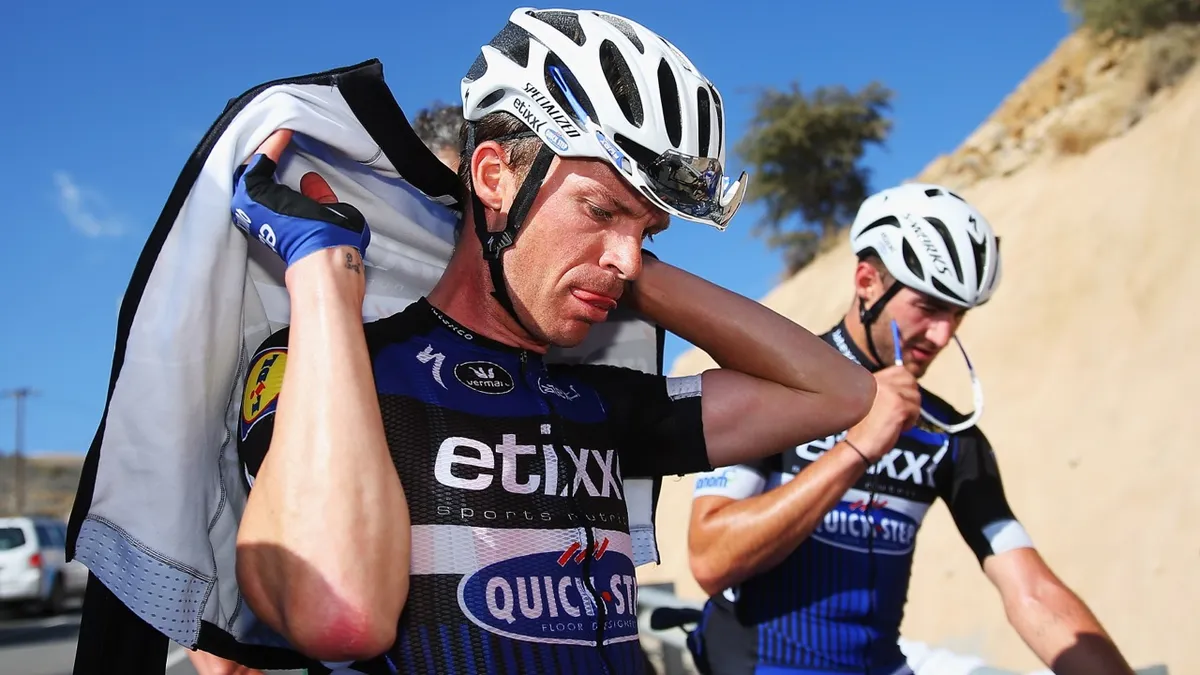
"There’s a lot of work examining the psychology of exercise that feeds into exercise regulation," says Stephen Cheung, professor of ergonomics at Brock University, Canada. "A researcher in Wales did a nice study examining how quickly you pick up a mental template for exercise intensity.
"He had two groups. One was told they were going to do a 4km effort four times a day with breaks. They knew what they were going to do and they were getting full feedback. The experimental group was told that they were also doing four efforts and that they were identical in length but they weren’t told what that length was. Also, they weren’t given any feedback during the trial.
"With the full knowledge group, performance was dead flat. The experimental group started way up here but by the third effort, wham – dovetailed right in like the other group. That study tells me how quickly you set this mental template of whatever the distance, even without power meters and speedometers, you instantly resume perfect pace.
"Mental training is still a fledgling field but if you can tap into areas like raising this pacing template, performance gains could be huge."
James Witts' The Science of the Tour de France is on sale now from Bloomsbury for £11.89. To buy a copy head here.

